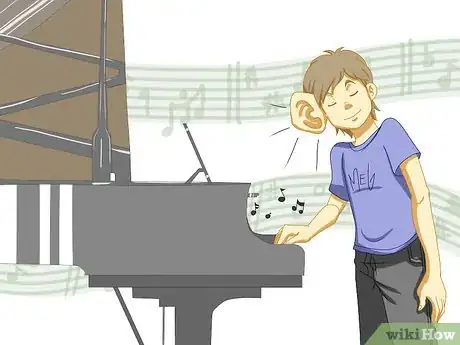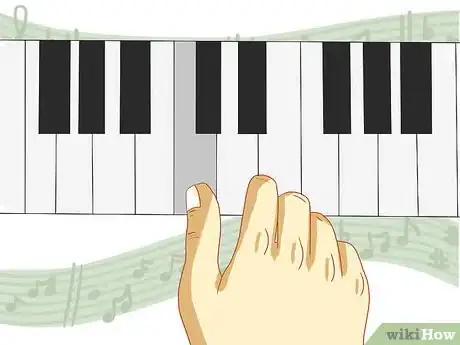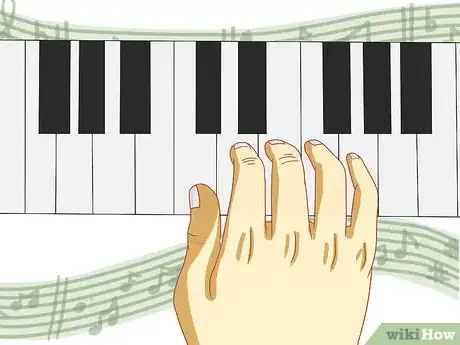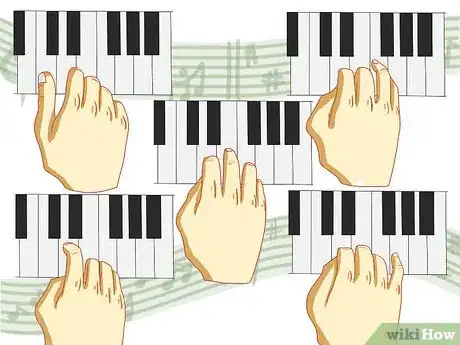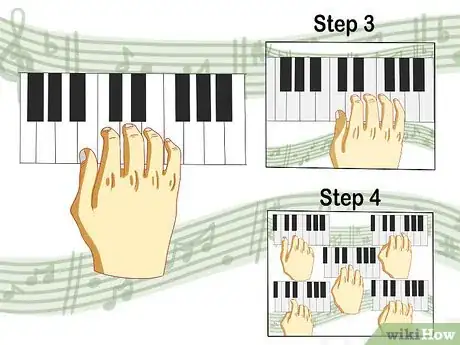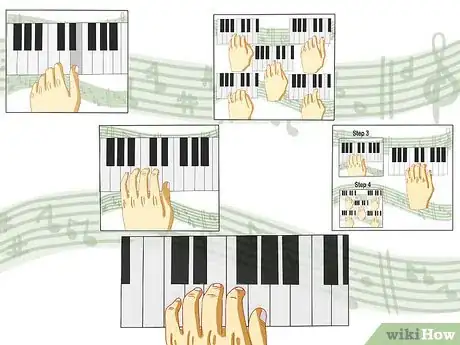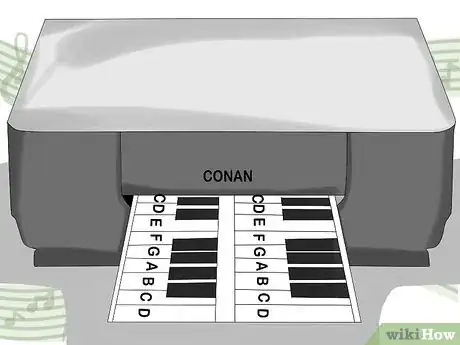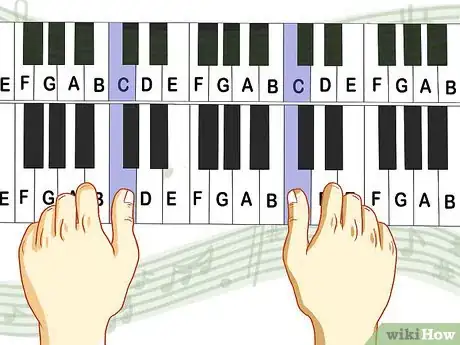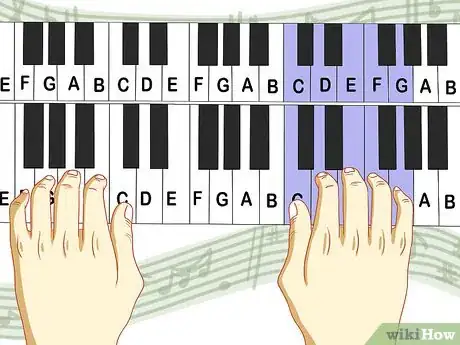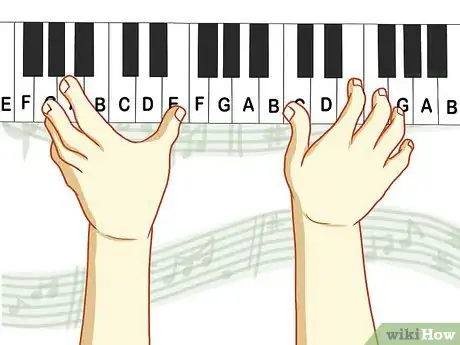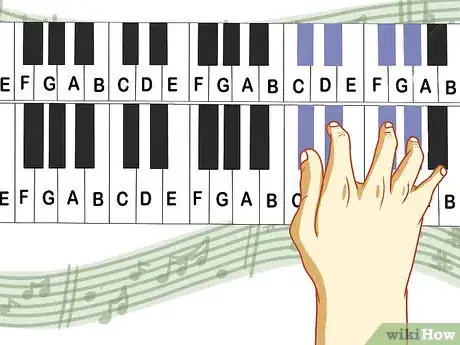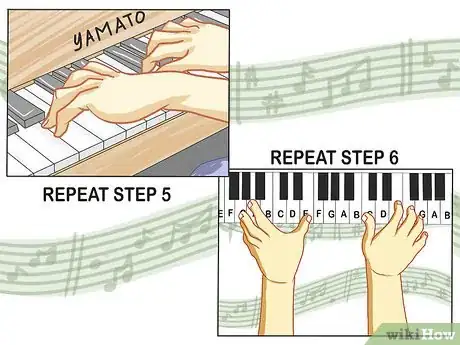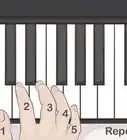X
wikiHow is a “wiki,” similar to Wikipedia, which means that many of our articles are co-written by multiple authors. To create this article, volunteer authors worked to edit and improve it over time.
This article has been viewed 27,439 times.
Learn more...
Playing piano can be a hard skill to master, but with a few easy tips learning can be easier than ever!
Steps
Method 1
Method 1 of 2:
Learn By Ear
-
1Get Access to a tuned piano.
- This is important for learning by ear, so that way you can play what you learn on other pianos without confusion.
- If you don't have access to a tuned piano, then you can still do this step, although it will be harder transfer your skills onto another piano.
-
2Place your right thumb on middle C.
- Use an app or the internet to find out what middle C sounds like, than match it on your piano.
- This is important for basic piano fingering.
Advertisement -
3Allow the rest of your fingers to fall where they feel comfortable.
-
4Practice playing different notes with the fingers on your right hand.
- It might be hard at first, but as you strengthen your fingers you will find it gets easier.
- Your fingers will begin to memorize the placement in this position.
-
5Move your thumb around, and repeat steps 3 and 4 with your right hand.
- Get used to moving your hand- it's important to learning all of the notes!
-
6Repeat Steps 2-5 with your left hand.
- Place your Left thumb on the G below middle C (3 white notes below middle C).
-
7To do black keys (sharps and flats) simply move your fingers to the black keys wherever they feel comfortable. Then repeat steps 4 and 5.
Advertisement
Method 2
Method 2 of 2:
Learn by Sight
-
1Have access to a piano.
- This option is good if you're not sure your piano is in tune.
-
2Print out a keyboard with the keys labeled (C, D, E, F, G, A, B,)
-
3Place your thumb on the key that matches the C.
-
4Match the rest of your fingers to a key.
- Pointer finger goes on D.
- Middle Finger Goes on E.
- Ring Finger goes on F.
- Pinky Goes on G.
-
5Strengthen your fingers on these notes.
- Practice skipping notes and spelling words.
-
6Move your Fingers, keeping them in the same 5-finger note position.
-
7To play black keys, move the correct finger onto the correct key.
- The index finger plays the note between C and D.
- The middle finger plays the note between D and E.
- The ring finger plays the note between F and G.
- The pinky finger plays the note between G and A.
-
8Repeat steps 5 and 6 with the new notes.
Advertisement
Warnings
- While your muscles are strengthening, take 5-minute breaks every 20 minutes to avoid muscle fatigue.⧼thumbs_response⧽
- Do not press on the keys too hard, or you could cause permanent damage to your hands.⧼thumbs_response⧽
- Don't Give Up- Learning any Musical Instrument is a Long Process.⧼thumbs_response⧽
Advertisement
References
- 15 Years of Personal Experience Playing the Piano.
- 5 years of Experience as a Piano Teacher.
- Touring High School Piano Company for 4 years.
About This Article
Advertisement
